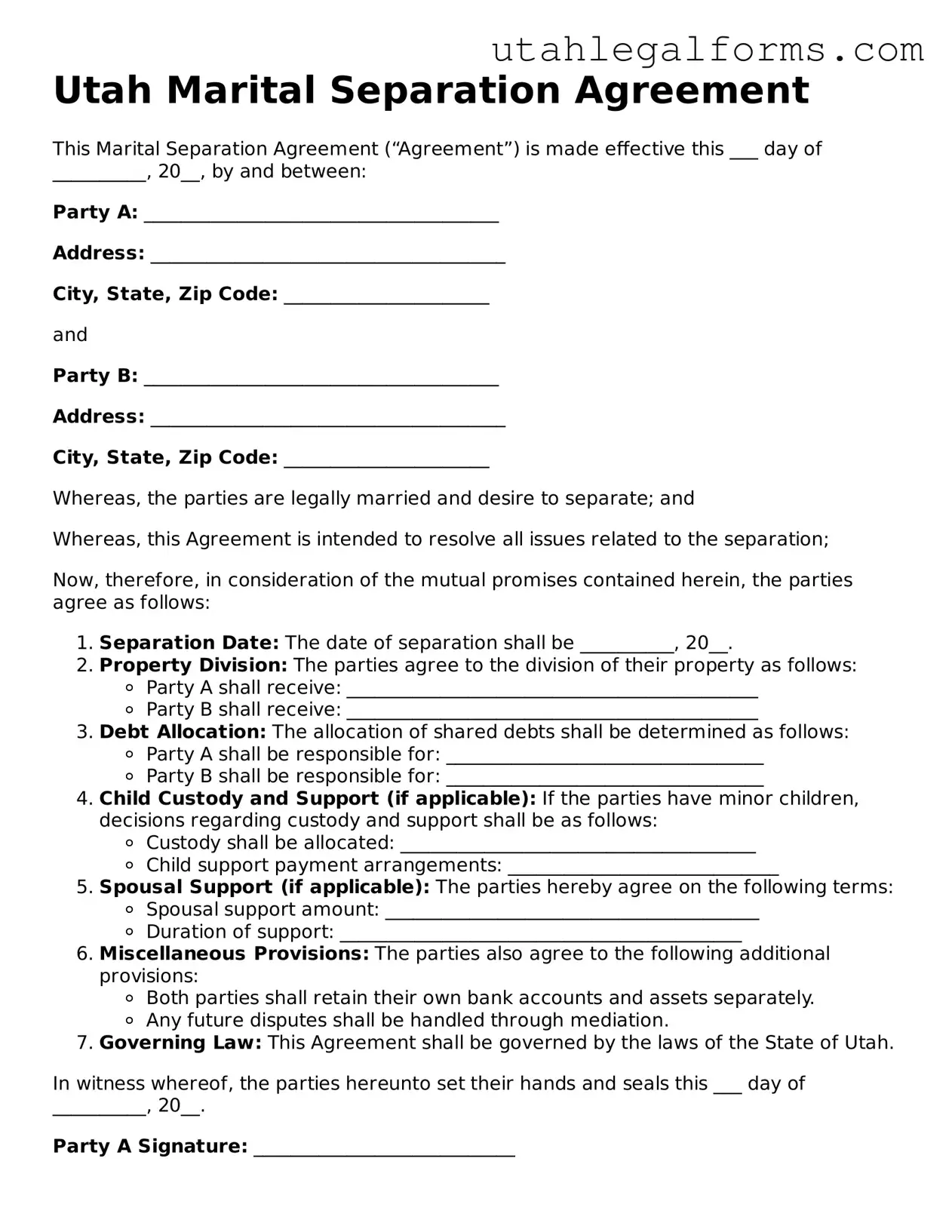Official Marital Separation Agreement Form for Utah State
A Utah Marital Separation Agreement is a legal document that outlines the terms and conditions of a couple's separation, addressing issues such as property division, child custody, and support obligations. This form serves as a crucial tool for couples looking to define their rights and responsibilities while living apart. If you're considering a separation, take the first step by filling out the form below.
Access Marital Separation Agreement Now
